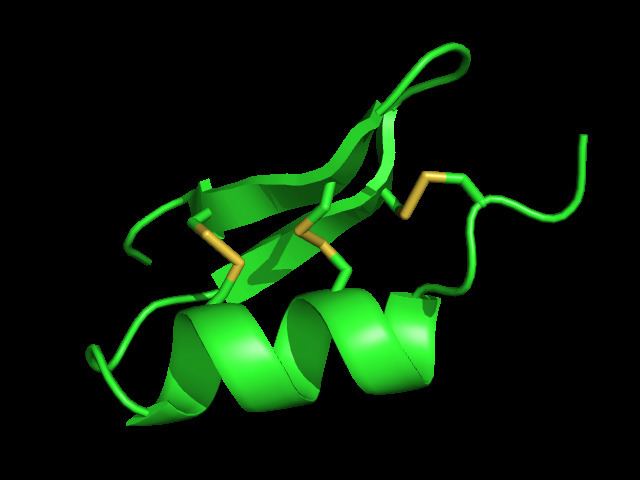 | ||
Scyllatoxin (also leiurotoxin I) is a toxin, from the scorpion Leiurus quinquestriatus hebraeus, which blocks small-conductance Ca2+-activated K+ channels.
Contents
Chemistry
Leiurotoxin I is a 31-residue peptide, with a helix and a short antiparallel β-sheet. This toxin is stabilized by disulfide bonds: Cys8-Cys26 and Cys12-Cys28 is bound to the β-sheet, Cys3-Cys21 is bound to an N-terminal segment preceding the helix. Leiurotoxin adopts the ά/β motif. Especially the positively charged residues (Arg6 and Arg13, which are located in the ά helix) are important for the expression of toxin biological activities and for its receptor affinity.
Target
Scyllatoxin is a blocker of small-conductance Ca2+– activated K+ channels at 10−13–10−11 M concentrations in various cell types. This toxin shows similarity in its physiological activity and binding specificity to apamin, but both toxins show no structural similarity.
Mode of action
Scyllatoxin blocks the slow after-hyperpolarization that follows an action potential in some nerve cells.
Toxicity
Scyllatoxin induces spontaneous contractions in guinea pig taenia coli muscle cells that have been relaxed with epinephrine.
